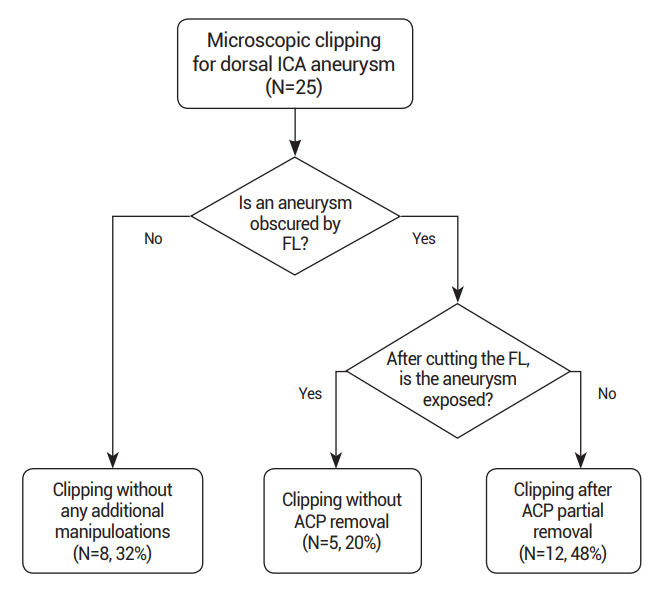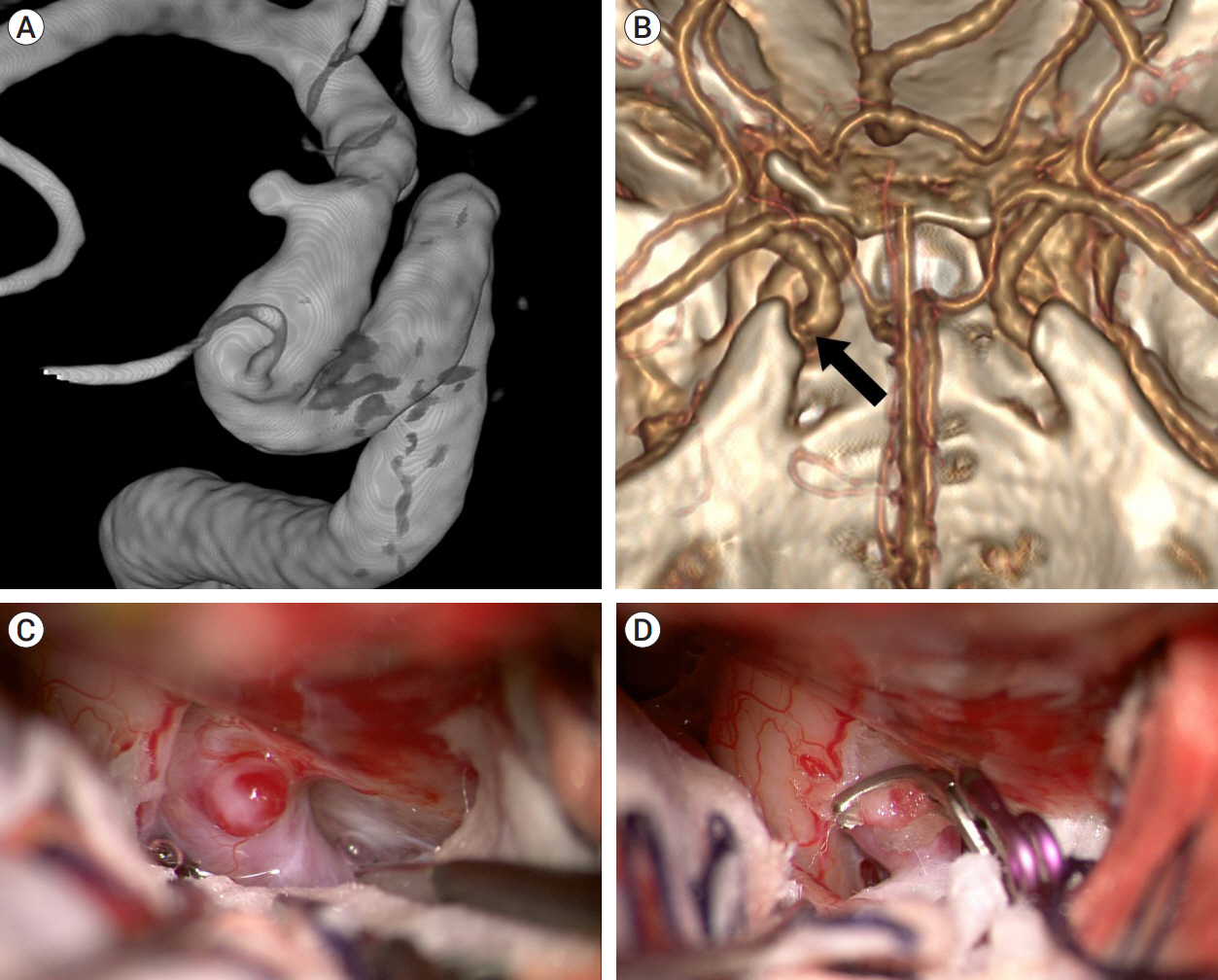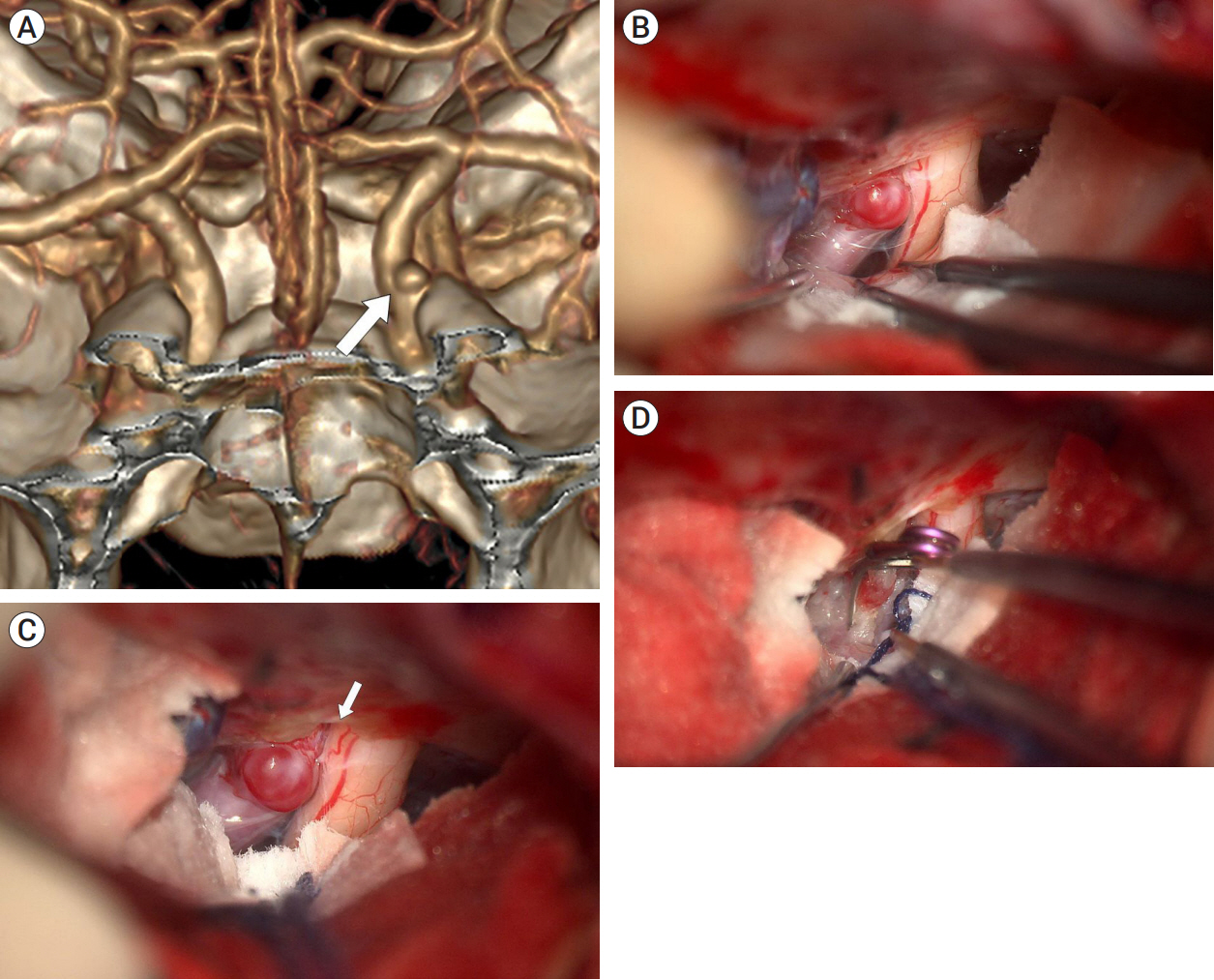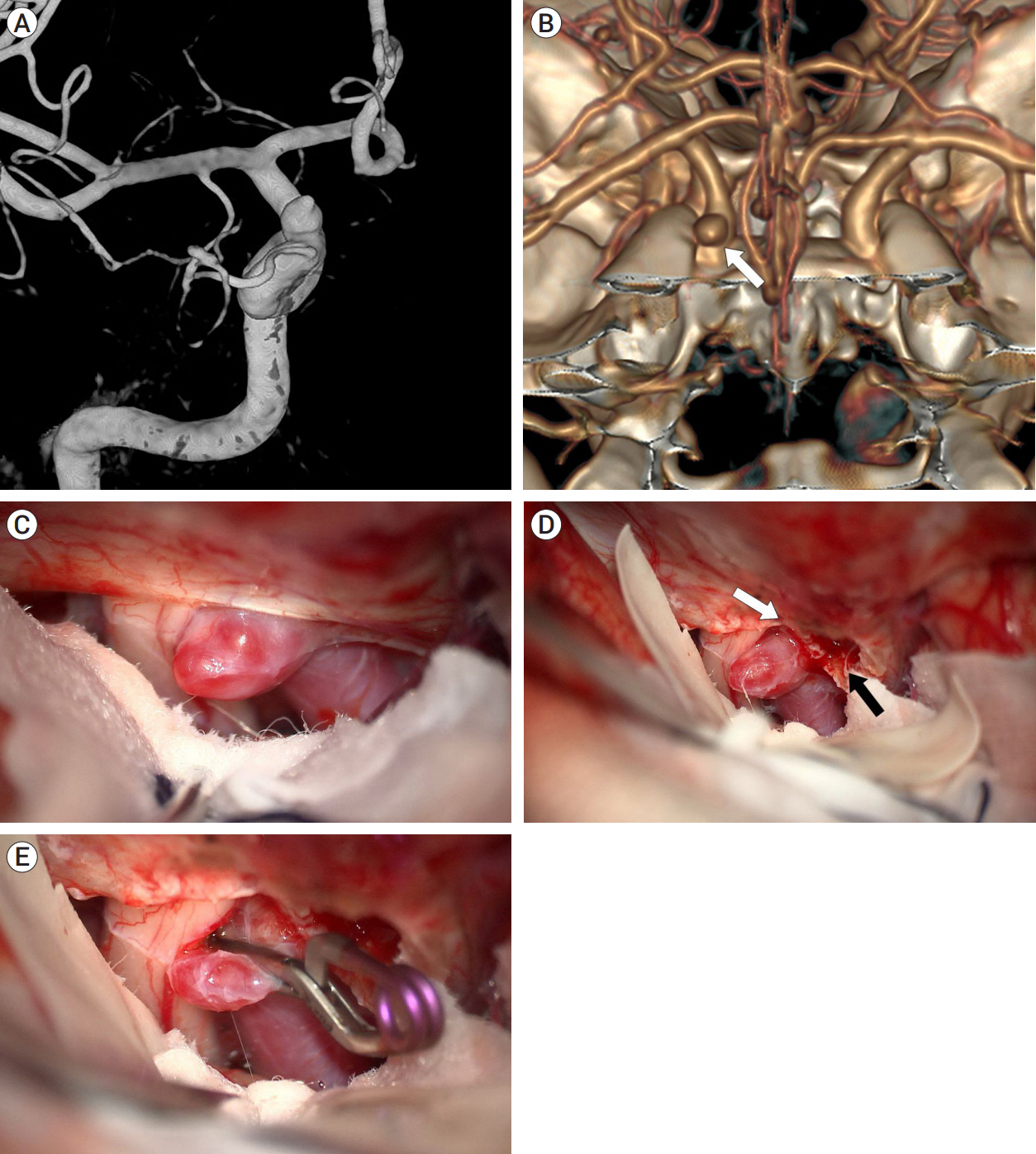J Cerebrovasc Endovasc Neurosurg.
2023 Dec;25(4):475-475. 10.7461/jcen.2022.E2021.12.001.E.
ERRATUM: Wire perforation of the missed tiny aneurysm originating from the fenestrated A1 segment during the endovascular approach
- Affiliations
-
- 1Department of Neurosurgery, Medical Research Institute, Pusan National University Hospital, School of Medicine Pusan National University, Busan, Korea
- KMID: 2549456
- DOI: http://doi.org/10.7461/jcen.2022.E2021.12.001.E
Figure
Reference
-
1. Geyik S, Yavuz K, Yurttutan N, Saatci I, Cekirge HS. Stent-assisted coiling in endovascular treatment of 500 consecutive cerebral aneurysms with long-term follow-up. AJNR Am J Neuroradiol. 2013; Nov-Dec. 34(11):2157–62.2. Hong CK, Ahn JY, Joo JY. Internal carotid artery trunk aneurysms-management and outcome. Korean Journal of Cerebrovascular Surgery. 2006; 8(2):91–5.3. Kachhara R, Nair S, Nigam P. Ophthalmic segment aneurysms: Surgical treatment and outcomes. J Neurosci Rural Pract. 2021; Oct. 12(4):635–41.4. Koivisto T, Vanninen R, Hurskainen H, Saari T, Hernesniemi J, Vapalahti M. Outcomes of early endovascular versus surgical treatment of ruptured cerebral aneurysms. A prospective randomized study. Stroke. 2000; Oct. 31(10):2369–77.5. Krisht AF, Hsu SP. Paraclinoid aneurysms: Part 1: Superior (true ophthalmic) aneurysms. Contemporary Neurosurgery. 2008; 30(15):1–5.6. Kulwin C, Tubbs RS, Cohen-Gadol AA. Anterior clinoidectomy: Description of an alternative hybrid method and a review of the current techniques with an emphasis on complication avoidance. Surg Neurol Int. 2011; 2:140.7. Kwon BJ, Im SH, Park JC, Cho YD, Kang HS, Kim JE, et al. Shaping and navigating methods of microcatheters for endovascular treatment of paraclinoid aneurysms. Neurosurgery. 2010; Jul. 67(1):34–40. discussion 40.8. Larson JJ, Tew JM Jr, Tomsick TA, van Loveren HR. Treatment of aneurysms of the internal carotid artery by intravascular balloon occlusion: Long-term follow-up of 58 patients. Neurosurgery. 1995; Jan. 36(1):26–30. discussion 30.9. Liu J, Jing L, Wang C, Paliwal N, Wang S, Zhang Y, et al. Effect of hemodynamics on outcome of subtotally occluded paraclinoid aneurysms after stent-assisted coil embolization. J Neurointerv Surg. 2016; Nov. 8(11):1140–7.10. McDougall CG, Spetzler RF, Zabramski JM, Partovi S, Hills NK, Nakaji P, et al. The barrow ruptured aneurysm trial. J Neurosurg. 2012; Jan. 116(1):135–44.11. Mitchell PJ, Muthusamy S, Dowling R, Yan B. Does small aneurysm size predict intraoperative rupture during coiling in ruptured and unruptured aneurysms? J Stroke Cerebrovasc Dis. 2013; Nov. 22(8):1298–303.12. Molyneux A, Kerr R; International Subarachnoid Aneurysm Trial (ISAT) Collaborative Group, Stratton I, Sandercock P, Clarke M, et al. International subarachnoid aneurysm trial (ISAT) of neurosurgical clipping versus endovascular coiling in 2143 patients with ruptured intracranial aneurysms: A randomized trial. J Stroke Cerebrovasc Dis. 2002; Nov-Dec. 11(6):304–14.13. Ries T, Buhk JH, Kucinski T, Goebell E, Grzyska U, Zeumer H, et al. Intravenous administration of acetylsalicylic acid during endovascular treatment of cerebral aneurysms reduces the rate of thromboembolic events. Stroke. 2006; Jul. 37(7):1816–21.14. Ryttlefors M, Enblad P, Kerr RS, Molyneux AJ. International subarachnoid aneurysm trial of neurosurgical clipping versus endovascular coiling: Subgroup analysis of 278 elderly patients. Stroke. 2008; Oct. 39(10):2720–6.15. Shin DS, Carroll CP, Elghareeb M, Hoh BL, Kim BT. The evolution of flow-diverting stents for cerebral aneurysms; Historical review, modern application, complications, and future direction. J Korean Neurosurg Soc. 2020; Mar. 63(2):137–52.16. Song J, Kim BS, Shin YS. Treatment outcomes of unruptured intracranial aneurysm; Experience of 1,231 consecutive aneurysms. Acta Neurochir (Wien). 2015; Sep. 157(8):1303–10. discussion 1311.17. Szmuda T, Sloniewski P, Ali S, Kamieniecki A, Dzierzanowski J. Extent of anterior clinoidectomy for clipping of carotid-ophthalmic aneurysms predicted on three-dimensional computerised tomography angiography. Neurol Neurochir Pol. 2020; 54(2):138–49.
- Full Text Links
- Actions
-
Cited
- CITED
-
- Close
- Share
- Similar articles
-
- Wire perforation of the missed tiny aneurysm originating from the fenestrated A1 segment during the endovascular approach
- Ruptured Saccular Aneurysm Arising from Fenestrated Proximal Anterior Cerebral Artery : Case Report and Literature Review
- Fusiform Aneurysm of Proximal Anterior Cerebral Artery: Case Report
- Endovascular Repair of Thoracic Aortic Aneurysm Using a Custom-made Fenestrated Stent Graft to Preserve the Left Subclavian Artery
- Fenestrated Endovascular Aneurysm Repair versus Snorkel Endovascular Aneurysm Repair: Competing yet Complementary Strategies






